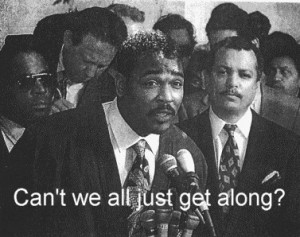In a letter to the editor in the June 2, 2011 Wall Street Journal, Charles Plushnick of Brooklyn, New York cites the recent U.S. Supreme Court ruling calling for the release of prisoners from California’s prisons as an example of failed leadership in California’s statehouse. Plushnick observed that neither former Governor Arnold Schwarzeneger nor former-now-current Governor Jerry Brown were or are capable of the kind of leadership demonstrated by former New York City Mayor Ed Koch, who increased the capacity of his city’s jails when faced with a similar challenge three decades ago.
Plushnick may be accurate in his assessment of the comparative leadership capabilities of the mayor and two governors. Plushnick seems to avoid the more compelling story of failed leadership. Failed leadership created the overcrowding in our correctional institutions. The problem is not that current facilities lack the needed capacity but that the demand for housing in correctional facilities dwarfs current capacity. That the demand for correctional facilities is so high is the real evidence of failed leadership.
Why blame the prisons? Somehow blaming people responsible for building prisons is easier than blaming parents, community leaders, churches, schools, civic organizations, and myriad other individuals and institutions and their failed leadership. It is easier to say we need more correctional capacity than to say our society is doing a poor job raising and socializing the children we conceive. It is easier to say that a governor in a budget-challenged state did a poor job allocating resources than to say that the number of children we are incapable of raising and of developing into employed, productive members of society, for which leaders at many levels and in many locales should be accountable, has become a number that is unacceptably, even unconscionably high. As a society, we have to start identifying and solving the right problems and stop wasting our time on tangential issues.
Failed leadership is a significant problem. Identification of good leaders by electorates at all levels is also a problem. Perhaps the problem of the electorate is another symptom of the problem behind prison overcrowding.

